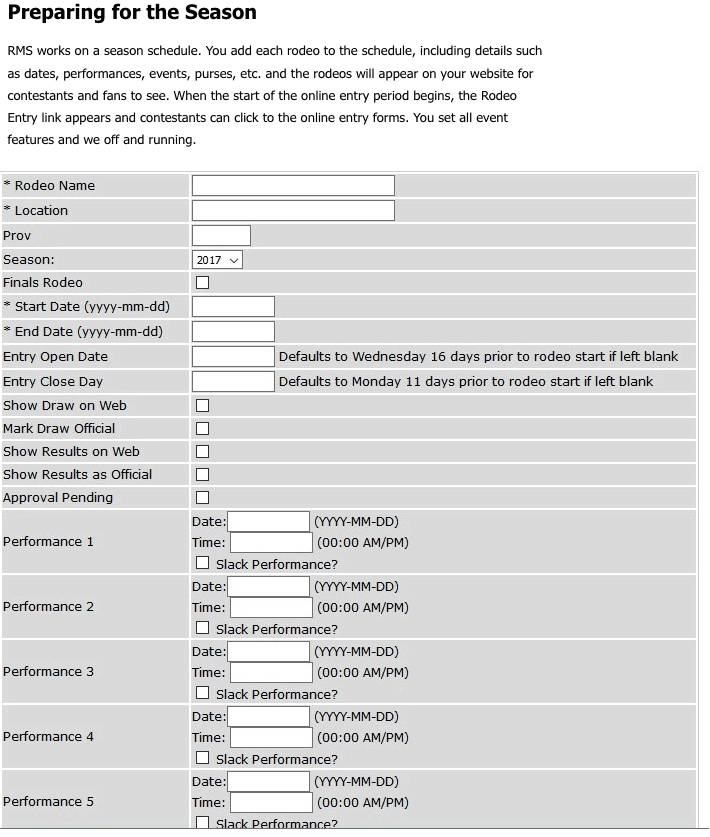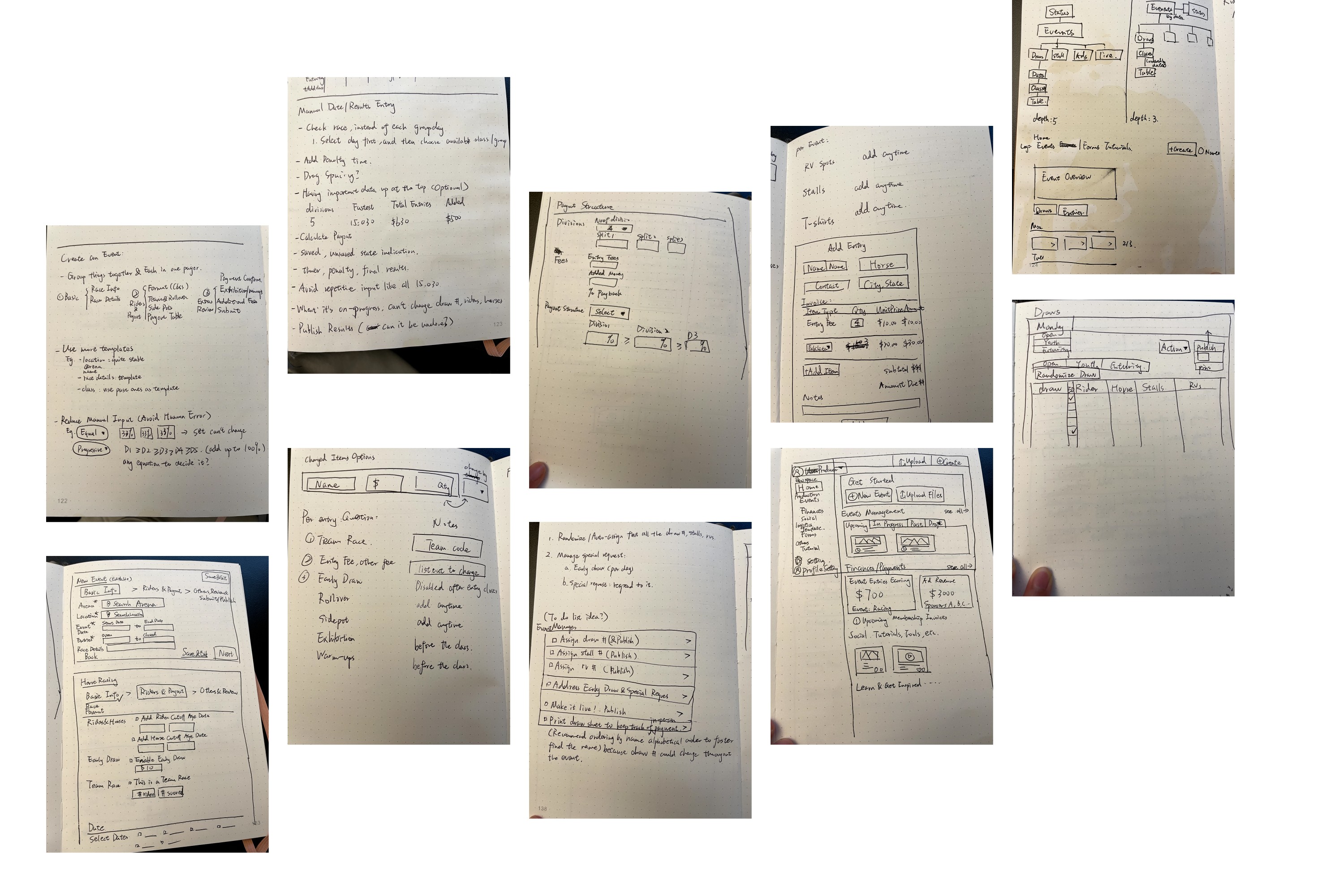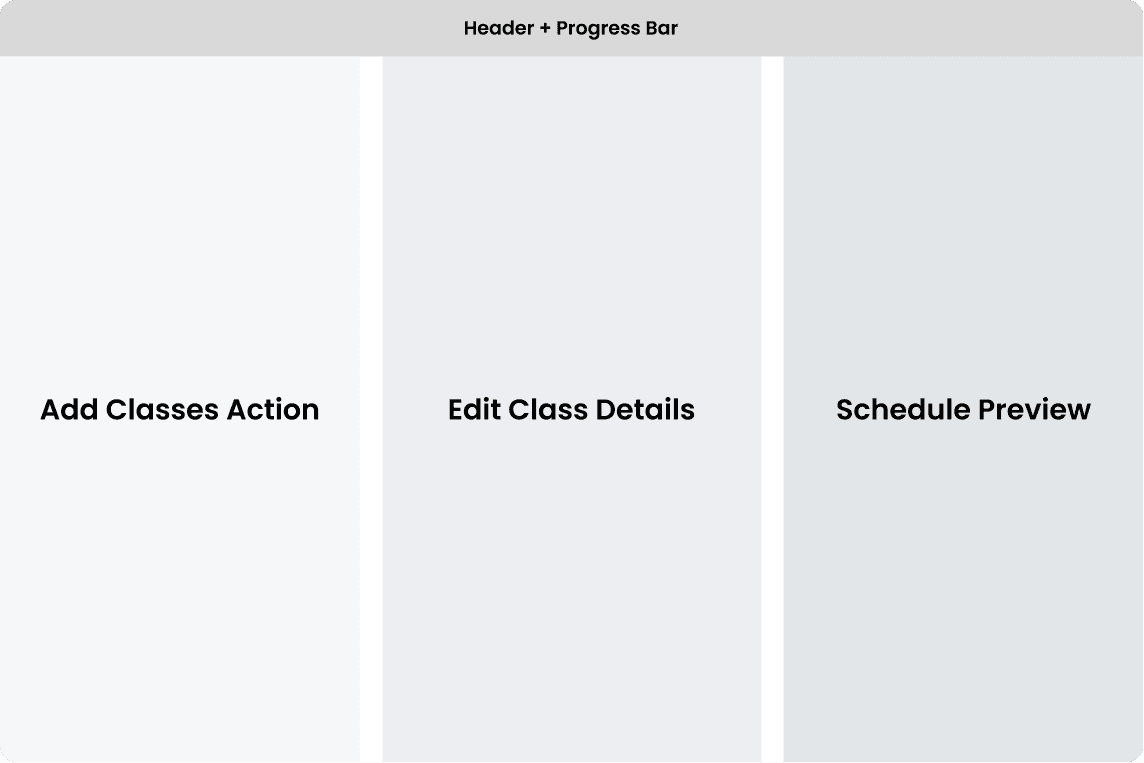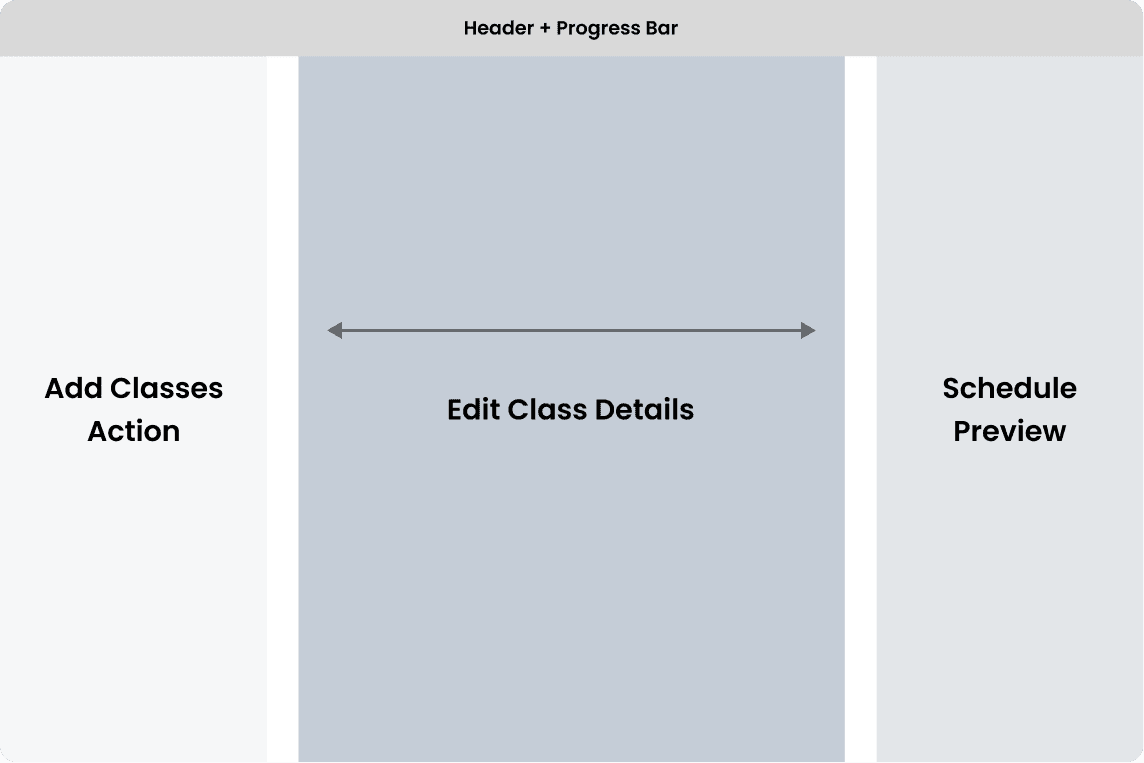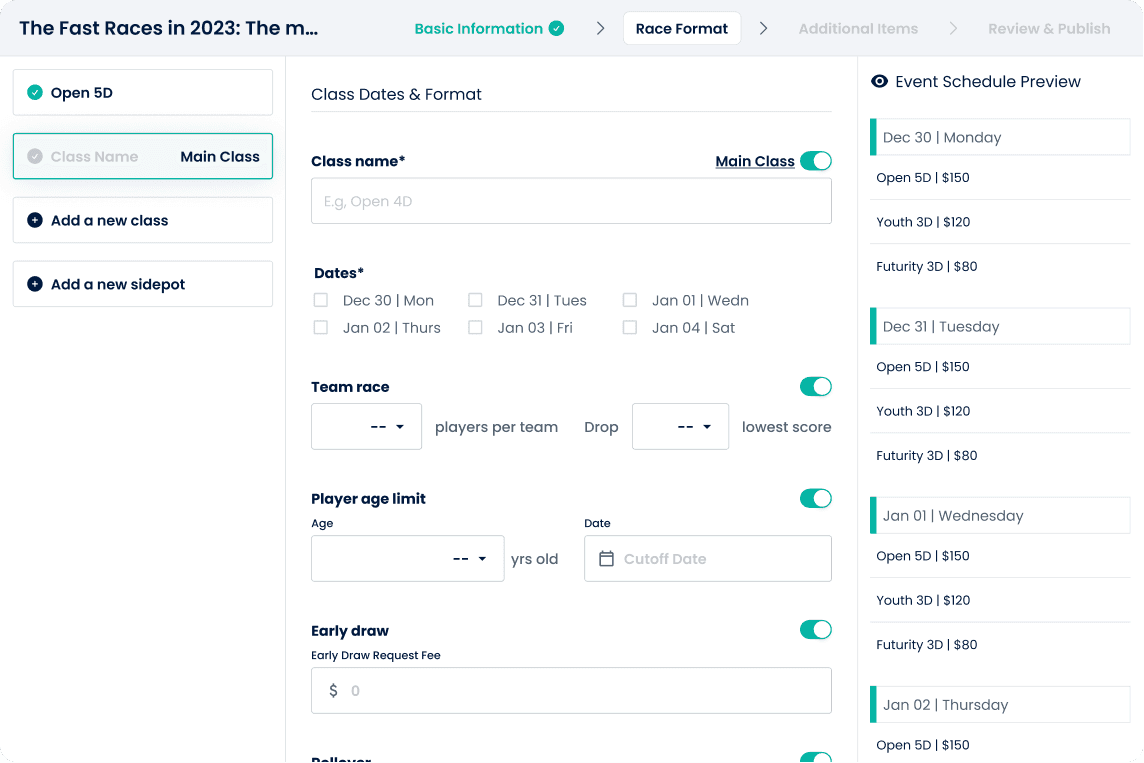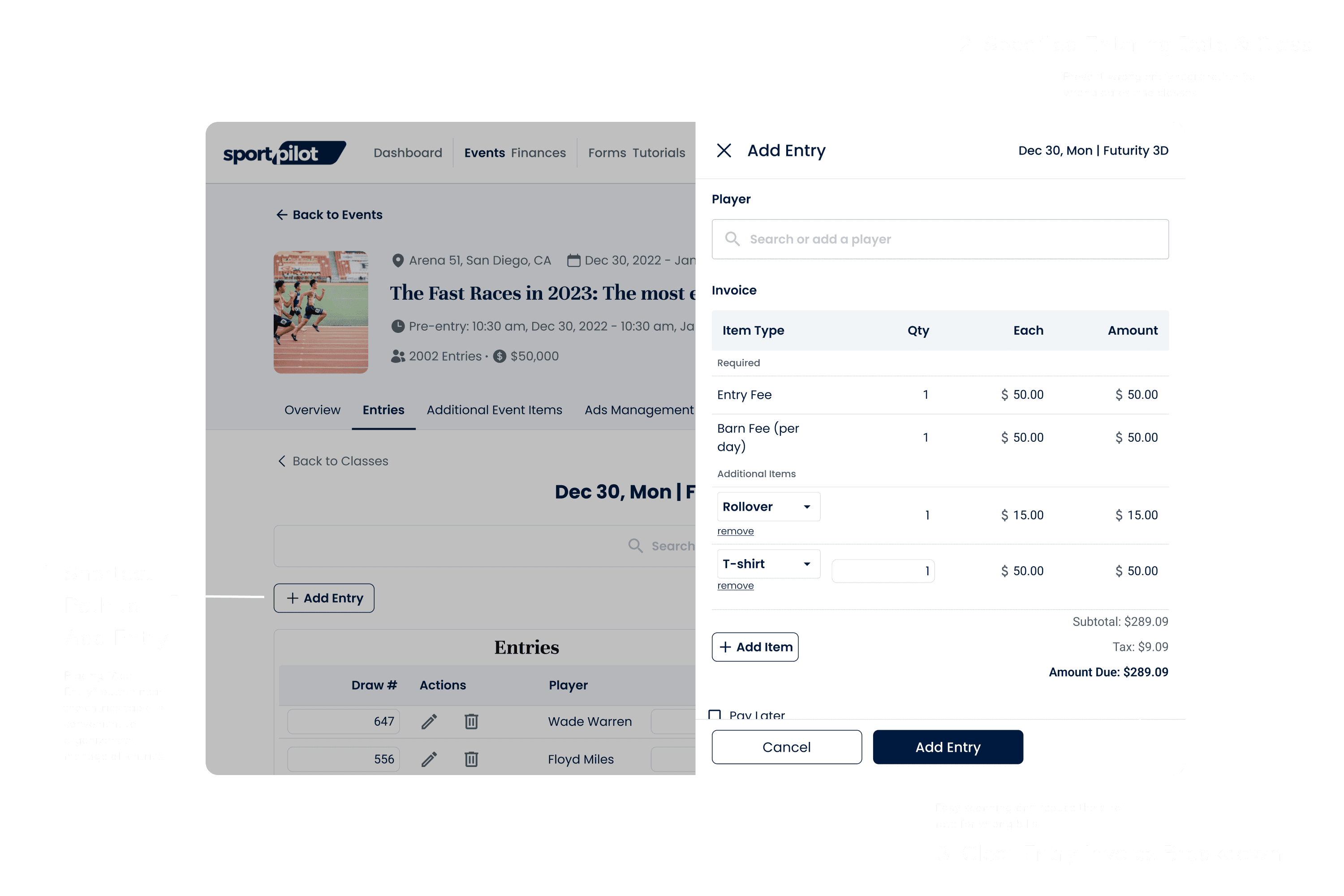
Hosting Rodeo Sport Events, All in One Place.
*For confidentiality, sensitive information, including but not limited to company name, are fictitious.
what did I Deliver?
An innovative, transparent, and organized sport event hosting experience
Transparent Event Management
Intuitive visibility from registration to finances—helping hosts confidently manage events.


Unified, Efficient Workflows
Innovative Edge for Event Producers
A market-focused tool for individual event producers in the U.S., transforming traditional registration into a competitive advantage with a consistent, user-friendly experience.

Why a new solution?
"It's a lucrative business."
>7500
Riders in the US
>650
Rodeo Events Hosted Annually
>$30 Million
Maximum Prize Money
*Secondary research results
Yet… Individual event producers struggle to manage their complex event-hosting workflows efficiently while players look for a centralized platform to enjoy their racing experience.
For Producers (Event Organizers),
For Players (Event Participants),
struggle to plan, organize, and manage complex sporting events with heavy-duty softwares that come with steep fees, around $2500 per event
facing difficulties in accessing real-time information and communicating with event organizers through fragmented digital platforms
navigating through at least 5 different softwares to ensuring participant safety, and complying with industry regulations
struggle to efficiently manage their competition schedules, track performance statistics, and maintain consistent registration processes across various events
What Did We Want to Achieve?
Client's Visions & Project Goals
The client envisioned a unified event management platform that expanded beyond basic registration—one intuitive app empowering users to seamlessly handle registrations, finances, and event logistics.
The project aimed to rapidly deliver an engaging, easy-to-use MVP, enabling our client to test product-market fit and gather actionable feedback from real users.
What's wrong with the existing solutions?
Identify Pain Points with the Existing Solutions.
From competitors analysis, I synthesized 3 main areas of users frustrations: lengthy creation process and low or no access for event management along with their busy workflows.
Existing Solutions
3 Main pain points that I identified
How did i approach this unfamiliar domain?
Mapping Interconnected Users Journeys
Based on expert interviews, players and producers have completely distinct needs, yet they actively interact at multiple points during their individual journeys.
Thus, I created a workflow diagram to visualize the interconnected journeys clearly. This helped align my assumptions with the founders early on and served as a dynamic guide throughout my design process.
And it kept evolving while I was designing.

Jobs-to-Be-done diagram for 2 user Personas
How did I facilitate a highly collaborative design process with all stakeholders, mainly founders and developers?
Visual sketches, low-fi wireframes.
After all the understanding and analyzing, I started to sketch out all the possible ideas of layouts, user flows, user cases, etc.
It was worth-noting that I didn't get everything right at the first time; however, I still presented my low-fi solutions to the founders and developers to gain their valuable feedback every time.
And then, I iterated them.
Hand-drawn sketches
Design Decision 1
Breaking down the multi-step event creation process.
Often, managers must fill out a long form to draft out all the race details. Here, I decomposed it with a more manageable multi-step process: 1. Basic Information > 2. Race Format > 3. Additional Items.
1. Initial Layout
2. Adjusted Proportion
To minimize effort in interactions and amplify draft accessibility, I utilized a tri-zone layout emphasizing Step 2 — Edit Class Details.
3. Final Hi-fi Prototypes
Design Decision 2
A well-organized navigation ensures find-ability and efficiency.
Once the event went live, managers need to oversee across different event details like the basics, entries, and sometimes inventory as well.
Thus, I iterated the design to prioritize the most critical information and make it easier for managers to focus on what mattered most.
Iteration 1
However, iteration 1 lacked efficient navigation, as it requires managers go back and forth when updating details between categories.
Iteration 2
To enable managers to seamlessly update details, I implemented a three-tier information architecture to reduce cognitive load throughout the process.
Design Decision 3
Handling Real-Time Requests with Confidence
Events are unpredictable.
Organizers need intuitive tools to handle unexpected, last-minute situations—like walk-in participants—without disrupting their workflow or causing errors.
My Solution: Quick Add Entry
I introduced a clearly accessible “Quick Add Entry” side panel, located directly next to the entries table. This allows organizers to swiftly manage last-minute entries without leaving their current workspace.
What did my clients and manager say about my deliverables?
Testimonials.
What was the impacts?
SportPilot aims to revolutionize the professional sport event production industry, and it is on the right track.
Over 90% of the version 1.0 design prototypes received clients' approval and was ready for handoff to development phase. It saved the company, LaunchForce, and the client, SportPilot, so much back-and-forth rework time in the MVP development process.
After launching, our metrics include task completion rates and user satisfaction scores. The objective is to provide event managers with a helpful co-pilot, to navigate through dynamic event scenarios.
Reflections
Lessons that I Learned.
Stakeholders Alignment: Developing a comprehensive user task flow not only helped me map out the entire user journey, but also helped me better align with my stakeholders early on.
By presenting it to the team(founders and developers), I've gained more confidence throughout the design process.
Navigating Complexity: Understanding and breaking down complicated technical workflows into logical, digestible steps effectively sped up the design process in the professional sport event setting.


